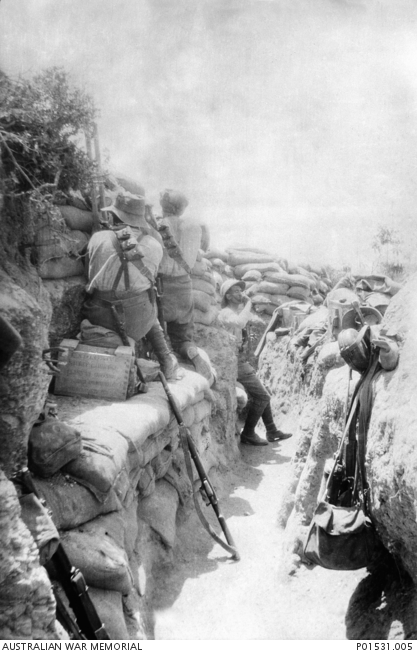A Gallipoli Camera

My name is Isobel White and I am a work experience student from Alfred Deakin High. As part of my week at the War Memorial I have been asked to research an item, an old Kodak camera used in World War 1 by Wilfrid Selwyn Kent Hughes.
The camera is a Kodak Vest Pocket. It was originally made around 1912 and it was used by the soldiers in WW1 because unlike previous models, it could fit in their pocket and did not need a tripod or other equipment. This meant that in addition to diaries and letters, they could also send home photos to their loved ones. It was not allowed for soldiers to have cameras at the front, as in addition to the security risks, the government thought that others may see the realtities of war through the photographs which could cause them to not want to sign up. Although they were forbidden, many soldiers, like Kent Hughes, carried their pocket cameras into the front line at Gallipoli and Palestine. However, on the Western Front, the rules were more strictly enforced and it was harder for soldiers to take cameras into the trenches.
Lieutenant Wilfrid ‘Billy’ Kent Hughes, owner of this camera, landed at Gallipoli with the Light Horse in May 1915. Although receiving a bullet wound while at Gallipoli, he stayed in the AIF until 1919, when he was discharged. The next year, he participated in the 400m hurdles event, representing Australia at the Belgium Olympics.
Photograph of Light Horsemen sniping at Rhododendron Ridge, taken by Kent-Hughes
In 1927, Kent Hughes entered politics and became a member of the Nationalist Party of Australia. In 1928, he was appointed secretary to Sir William McPherson’s cabinet, but by June the next year he had resigned his position. He later served in the Second World War and became a prisoner of the Japanese. He came back to Australia by 1948 and was chairman of the Australian Olympic Committee from 1951 planning the Olympic Games in Melbourne for 1956. After a long and distinguished career in politics he died in 1970.


